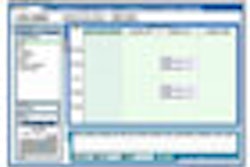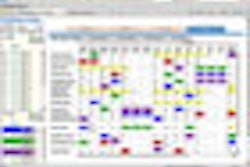Two inexpensive, easy-to-implement third-party software programs are making lives easier for IT support staff and radiologists at two healthcare facilities looking to improve efficiency and navigate multiple systems at desktop computers.
One scientific session on informatics workflow optimization during the RSNA 2007 meeting in Chicago focused on how third-party software can help IT departments achieve their goals.
A modified open-source availability monitoring package from Nagios Enterprises of St. Paul, MN, is used by the clinical IT services department of the University of Maryland Medical Center in Baltimore to provide a comprehensive overview of the activities and performance of all radiology-related IT systems.
Christopher Toland, clinical IT services director at the medical center, reported that this heterogeneous, independent monitoring system enables all vendors' systems to be effectively viewed through a single, continuously updated interface. Support staff is immediately notified when signs of possible system failure are identified.
"This enables the support team to react faster, and our ability to have proactive monitoring allows us resolve problems before they become issues of IT systems failure," Toland said. "The system identifies warning signs in specific queue statuses."
The system also is designed to supplement individual monitoring systems supplied by vendors, or be used independently, he explained. Custom plug-ins were created to monitor RIS HL7 feeds, PACS application servers, and DICOM gateway operations.
"With the comprehensive monitoring tool, we believe that satisfaction with our department has improved because the radiology informatics systems that people now take for granted are running smoothly," Toland said.
Macro software
In another presentation, Dr. David Hirschorn of Staten Island University Hospital in New York discussed how using commercial macro software to automate computer tasks by screen elements makes RIS, PACS, and speech recognition software more functional.
In 2005, Hirschorn adapted third-party macro software, Quick Macros 2, to synchronize Staten Island's RIS and PACS, and share content with a speech recognition system and the hospital's electronic medical record (EMR) system. It is possible to read, change, or click on almost any text box, drop-down list, menu item, or button of any application on the computer desktop using this software.
"As an example, once an exam accession number from the RIS worklist is read, it can be entered into both the PACS and the speech recognition system, even if they are located on separate computers," Hirschorn said. "It's not the perfect solution, but this macro method is cheap, simple, and more versatile than the vendor-supplied desktop integration tools."
"Radiologists need to be able to use whatever works best to improve their daily workflow," he added. "The third-party macro software is a homegrown solution that is readily adaptable in minutes as requirements change, and it does not require vendor support."
By Cynthia Keen
AuntMinnie.com contributing writer
December 4, 2007
Related Reading
Developing a cost-effective image QA workflow with PACS, November 21, 2007
Medical software design, Part III: How product line architectures fail, January 29, 2004
Copyright © 2007 AuntMinnie.com



















